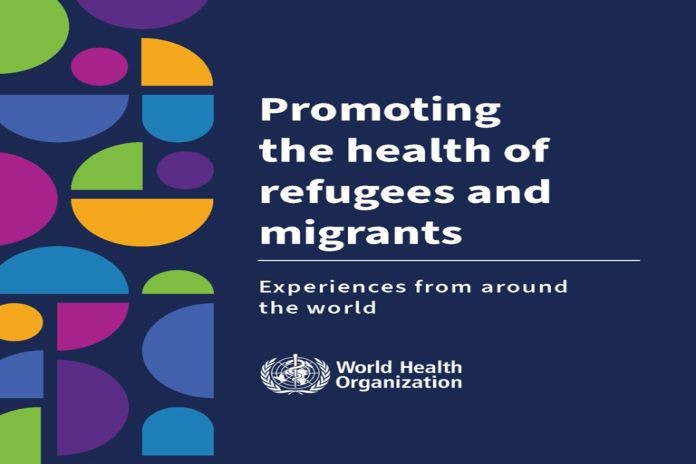GENEVA, Switzerland – A new WHO compendium of 49 country case examples, Promoting the health of refugees and migrants: experiences from around the world, developed by the health and migration programme is released illustrating positive steps taken in countries towards better health outcomes for the one billion people on the move.
Based on voluntary submissions by governments and partners, the publication showcases how countries with varying health systems and challenges have implemented policies in line with the WHO Global Action Plan (WHO GAP) on promoting the health of refugees and migrants 2019-2023.
“This new compendium highlights promising practices in delivering care to refugees and migrants to ensure they can enjoy the right to health wherever and whenever they go, like anyone else,” said Dr Santino Severoni, WHO director of health and migration programme.
“Our work for better health outcomes for all is far from finished. The WHO GAP extension to be discussed at the upcoming World Health Assembly provides us with a new opportunity and momentum to tackle public health challenges faced by populations’ movement if we are to achieve universal health coverage for all, including refugees and migrants.”
Refugee and migrant health initiatives from around the world
The impact of migration and displacement on the health of refugees and migrants is undeniable and leads to health inequities.
The compendium illustrates innovative examples from a range of countries that have formulated and adopted national health strategies, policies, and programmes tackling the root causes of ill-health for refugees and migrants, including those critical social determinants that can negatively influence health.
Some examples include:
- In Pakistan, COVID-19 mobile vaccination services in 2021-2022 increased vaccination uptake and access from 5 to 48 percent among refugees and marginalized populations.
- In Belgium, a video-remote intercultural mediation programme provided free intercultural mediation services in hospitals, primary care centres and medical services of reception centres for asylum seekers. These included access to over 100 intercultural mediators in 20 different languages. In 2021, intercultural mediation interventions via remote video rose by 40 percent reaching a total number of 12, 456 sessions.
- The Sexual Reproductive Health Rights and HIV Knows No Borders project reached over 100, 000 vulnerable young people, migrants and sex workers in Eswatini, Lesotho, Malawi, Mozambique, South Africa and Zambia in 2021. The project delivered health education on sexuality, HIV/AIDS, sexually transmitted infections, pregnancy and contraception issues through door-to-door visits and events such as mobile clinics, outreach campaigns and community dialogues. Across all countries, over 14, 000 vulnerable young people, migrants and sex workers were referred for health and non-health services.
- In Bangladesh, following the adoption of the WHO package of essential noncommunicable disease (NCD) interventions for primary health care, there has been a surge in patient access to care between 2019 and 2022. As a result, 27.3 percent out of 1.4 million adults across both the forcibly displaced Myanmar nationals and host communities are now receiving vital NCD treatment they otherwise would not have been able to receive before this initiative.
- In New Zealand, the Culturally and Linguistically Diverse Service (CALD) online training course has enrolled over 49, 000 people since its launch. The training engages health providers working in the emergency quota refugee regions to improve their cultural awareness and confidence to work with refugees and migrants.
- In northern Chile, the new “Safe Corridors for Inclusion” strategy promotes access to health care for migrants from point of entry to point of destination, and, after success, was extended to 6 regions in the country.
The way forward
This compendium lays out policy considerations for high-level decision-makers and partners working in refugee and migrant health through proven country experiences.
It shows we can and should make significant strides towards achieving a safer, healthier, and fairer world, if we can mainstream care for refugees and migrants into broader public plans with a long-term perspective in line with the WHO GAP, and support action through long-term collaborations and partnerships in and across countries.





